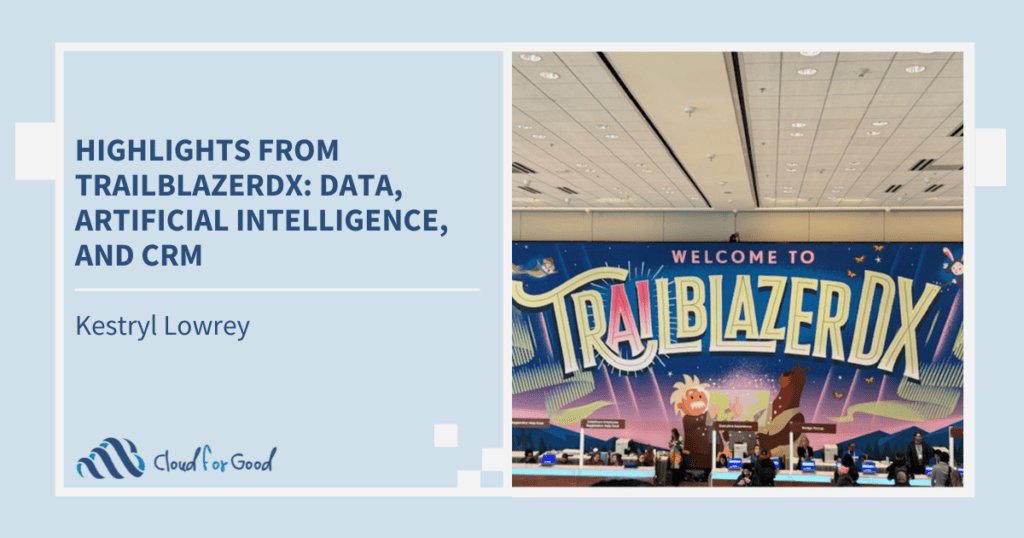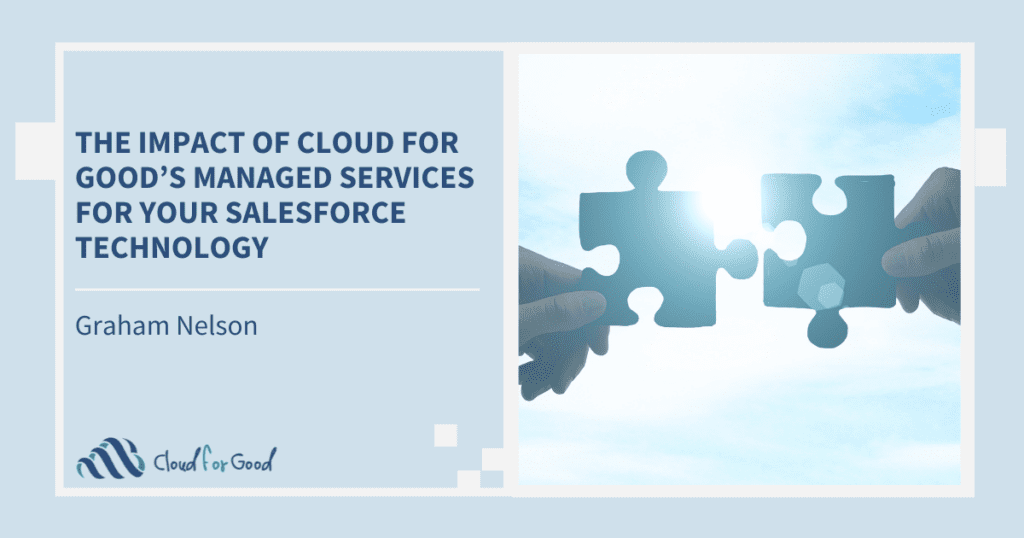There’s a lot of talk about Best Practice in the nonprofit sector, and having consulted on projects large and small, I want to take moment to relate this concept to implementing Salesforce. So much of a Salesforce implementation happens outside of Salesforce, I find that organizations eager for change and growth can lose sight of this when in the midst of an implementation project.
“Best Practice” is loosely defined at Wikipedia as, “A method or technique that has consistently shown results superior to those achieved with other means, and that is used as a benchmark.” Some best practices are required by law, some are industry standards, and frankly, some are aspirational goals for an industry or an organization.
I’ve seen nonprofits spend a great deal of time in discovery meetings describing exactly how they are different from their peers, what makes their fundraising and other business processes unique, and many justifications for why. These meetings usually open with someone from the organization flat out stating, “We’re a lot different because…” Inevitably, there reaches a moment when only one of two possible outcomes arise:
1) You are indeed a unique and special snowflake, just like every other unique and special snowflake. In other words, you just believe your needs are unique. It’s these commonalities that allow for tools such as Salesforce to be customized and configured with large applications such as Affinaquest, Causeview, Luminate CRM, the Nonprofit Starter Pack, and others, and implemented across the sector to support nonprofit fundraising on Salesforce CRM.
2) You are indeed a unique and special snowflake. But is this uniqueness positive or detrimental to your overall business process operations? And, how will it be properly encompassed and enforced in your Salesforce implementation?
It’s a bit easier to pick at fundraising than other mission-driven processes as they are implemented within Salesforce, predominantly because although nonprofits have many different styles of fundraising, the methodologies behind it remain relatively constant: you’re soliciting individuals and organizations for contributions in support of general operating and program-specific expenses to better move your mission.
Fundraising support in Salesforce is designed to abide by and enforce, but not create, best practices in fundraising for nonprofits. Moreover, fundraising applications are designed to use the Salesforce Objects and strategies – Salesforce not being a nonprofit tool – that can best be re-purposed and created for nonprofits to successfully use it for fundraising. So if you’re really struggling to make a fundraising tool work for you in Salesforce, and your consultant is saying that “that’s going to take a lot of work or customization to accomplish,” or more plainly, “that’s not how the tool is supposed to work,” then I’d like to invite you to examine your actual fundraising processes outside of Salesforce.
I’ve seen a lot of things that fall outside the box of general fundraising best practices – nonprofits that have tried to implement strategies such as: using Campaigns to represent businesses (instead of Accounts), cultivating and receipting “households” instead of individuals as members of households for donations, hard-crediting individuals (instead of organizations) for gifts through donor-advised and family foundations, and the list goes on. Each time, implementing Salesforce and an associated fundraising tool became a process, reporting, and technological challenge for the nonprofit. In each of these circumstances, the organization was violating some form of fundraising best practice outside of Salesforce.
What happens, however, when you’re using Salesforce for non-fundraising program activities to further your mission? Then the law of best practice within Salesforce still applies. Understanding the platform’s origin as a business-to-business sales tool, the nature of each of its Objects’ intended functionality, and working with an implementation partner that has a concise methodology of when to repurpose and when to create within Salesforce can go a long way to ensuring that your organization’s Salesforce instance remains versatile, scalable, and manageable over time.
If your processes and procedures are truly unique or different from how the rest of the nonprofit sector behaves, then I offer two thoughts:
1) A good implementation and development partner will help you determine the proper placement of your data and processes into Salesforce in a way that makes sense for the platform. This may occasionally mean that your organization will need to adjust its processes, procedures and data entry outside of Salesforce. I’m often wary of instances that have been implemented with either *everything* being custom built for clients, or everything conforming to the Salesforce architecture so rigidly the client struggles with user adoption and change management. Salesforce is a powerful platform, and a best practice implementation strikes a balance that preserves the intent of its use while accommodating the need of the organization.
2) It’s not enough to know that you behave or operate differently from others, but your organization should know *why* and make sure this is recorded for future staff. Nonprofits suffer staff matriculation just like any other organization, and someone different from you will likely be reviewing data, processes, reports or other information in the future and need to know why they’re being done and appearing in the way they are. Too often, an implementation is done without considering how future staff will encounter and use Salesforce, and decisions that seem to make sense to everyone now may not when that “everyone” later consists of someone else.
Lastly, a best practice that I will write on in the future is that of administration, management and documentation for your Salesforce instance. Salesforce is not the kind of platform that is implemented once and never touched again. It grows and changes over time, as does your organization, and you will need to revisit it with the support of either an implementation partner, or better, the development of your own organization’s Salesforce administrator.





